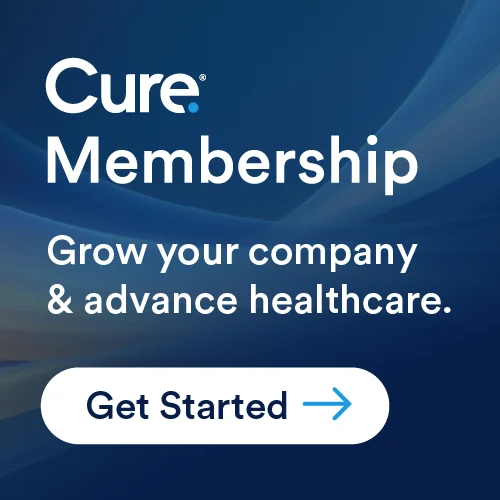
Overview
George Vradenburg, Chairman and Co-Founder of UsAgainstAlzheimer's, shares his optimism about advances in Alzheimer’s research, including new diagnostics and progress for a future vaccine.
Blood test, vaccine moving closer to market
Alzheimer's disease is a condition that most Americans fear. But progress is afoot, and there is reason for hope. That's the message that George Vradenburg, Chairman and Co-Founder of UsAgainstAlzheimer's, shared with Cure in September 2024. Vradenburg was visiting New York City to attend the Global Brain Coalition meeting as part of the Science Summit 2024 during the United Nations General Assembly.
While the soaring increase in the number of people living with Alzheimer's is cause for concern, he explained that there is equal reason for optimism. Here are five of his takeaways.
There's a new blood test for earlier detection of Alzheimer’s indicators
The test detects tau and amyloid, the toxic proteins associated with brain plaques seen in Alzheimer's. Indeed, Mount Sinai Health System just announced in September 2024 that it was among the first in the world to incorporate this blood test into routine primary care as well as specialty care settings, and it may be coming soon to a doctor's office near you.
"The blood test is equal in quality to costly PET scans," explained Vradenburg.
Modifications in interpretation of the test results will be necessary due to race and gender differences in levels of amyloid and tau proteins — as well as in people who have vascular dementia — but the test holds promise for signaling the presence of Alzheimer's disease before symptoms of diminished thinking or function appear.
There is greater public health education about how to modify Alzheimer's risk factors
BOLD Infrastructure for Alzheimer’s Act (Building Our Largest Dementia Infrastructure for Alzheimer’s Act) legislation will encourage state, local and tribal public health departments to urge all Americans to take an active role in preventing future dementia symptoms.
"This is an effort to understand the public health possibilities of addressing cardiometabolic and lifestyle risk factors for future Alzheimer's by intervening in midlife," said Vradenburg. "The BOLD Infrastructure ensures that the CDC is empowered to identify these risk factors and make information available to the public about what people can do in midlife to reduce their risk of future Alzheimer's symptoms."
Examples of modifiable Alzheimer's risk factors include hearing loss, physical inactivity, hypertension, obesity, diabetes, smoking, excessive alcohol use and depression.
Alzheimer's research funding is on the rise
While the amount of money dedicated to Alzheimer's research is still much less than the cost of managing the disease, there is bipartisan support for increasing funding. The U.S. Senate recently approved $275 million in additional resources for Alzheimer's research.
"We found there has been really deep bipartisan support for additional research investments in Alzheimer's by both Republicans and Democrats," Vradenburg noted. "Funding has been increasing systematically over the last 10 years."
New global initiatives are increasing attention to brain health
At the UN Science Summit, the Global Brain Campaign and Global Brain Coalition were announced. "This is an effort for global organizations to bring brain health to the fore of global health agendas," said Vradenburg.
In addition to Alzheimer's and other neurodegenerative disorders, brain health encompasses mental health, epilepsy, Parkinson's disease, cerebrovascular disease and any disease that impacts the brain. There's also increased attention to brain resilience and ways that everyone can manage the stresses and strains of everyday life.
Vradenburg also described the Business Collaborative for Brain Health, an alliance of private sector partners developing effective solutions to optimize cognitive health throughout the lifespan.
"Businesses are addressing brain performance and the performance and motivation of their employees. They're working on the issue of how to assess mental health, reduce stress and strain in the office and help employees build resilience against those stresses and strains," he explained. "They have found that employees who participate in community activities and create larger networks of social relationships have a greater capacity to create social relationships at work. Companies that have created generous mental health plans have reduced overall healthcare costs by 35 percent."
The prospective of an Alzheimer's vaccine is not that far away
In addition to a routine Alzheimer's blood test and better support for enhancing brain resilience, Vradenburg believes an Alzheimer's vaccine is within our grasp.
"I would say within 10 years, we're going to have a vaccine for Alzheimer's," he contended. "A number of biotechs are now testing vaccines, and they've proven we can use our own innate immune system to resist the toxic proteins. So, I'm hopeful within 10 years that we'll have a vaccine."








